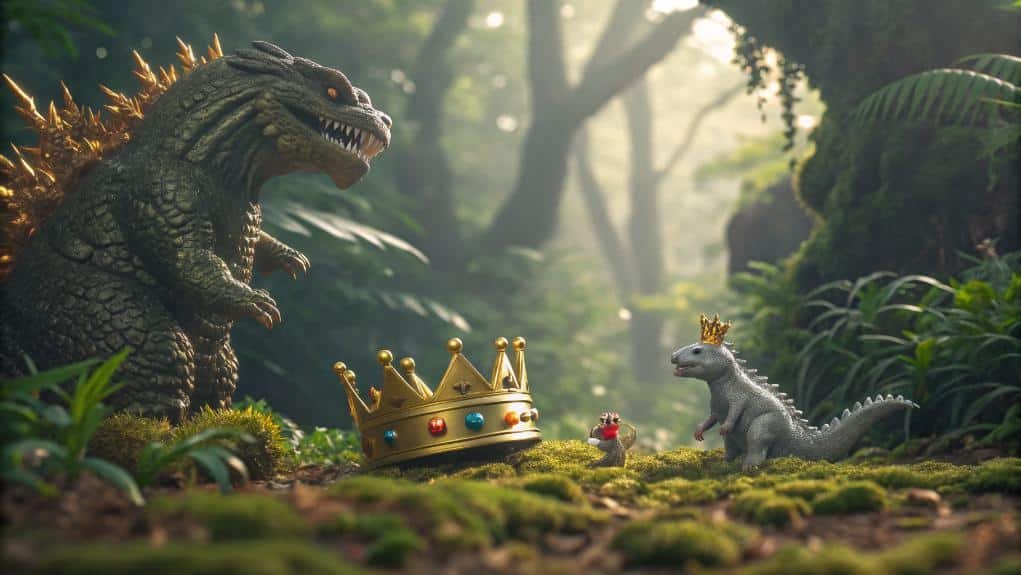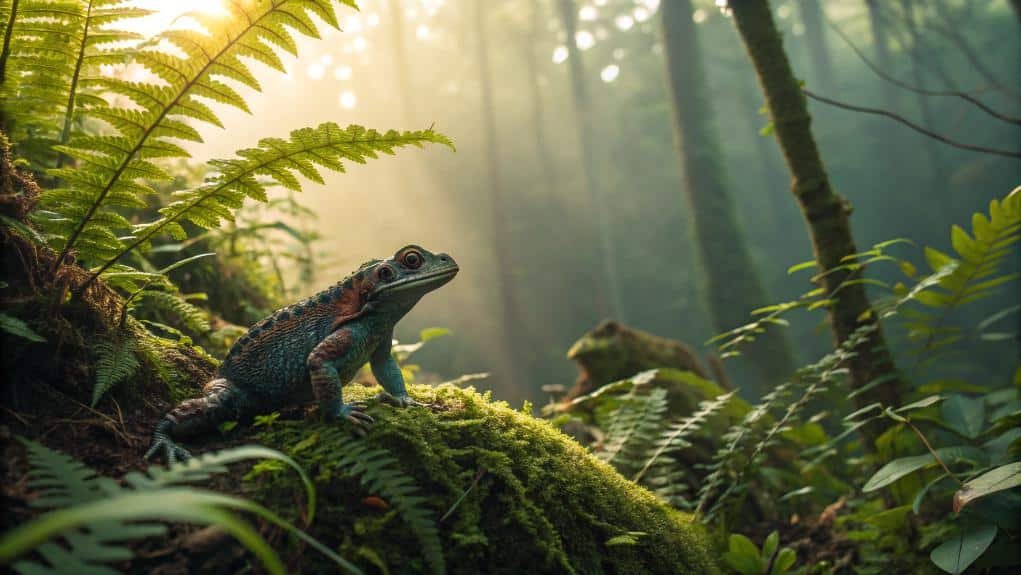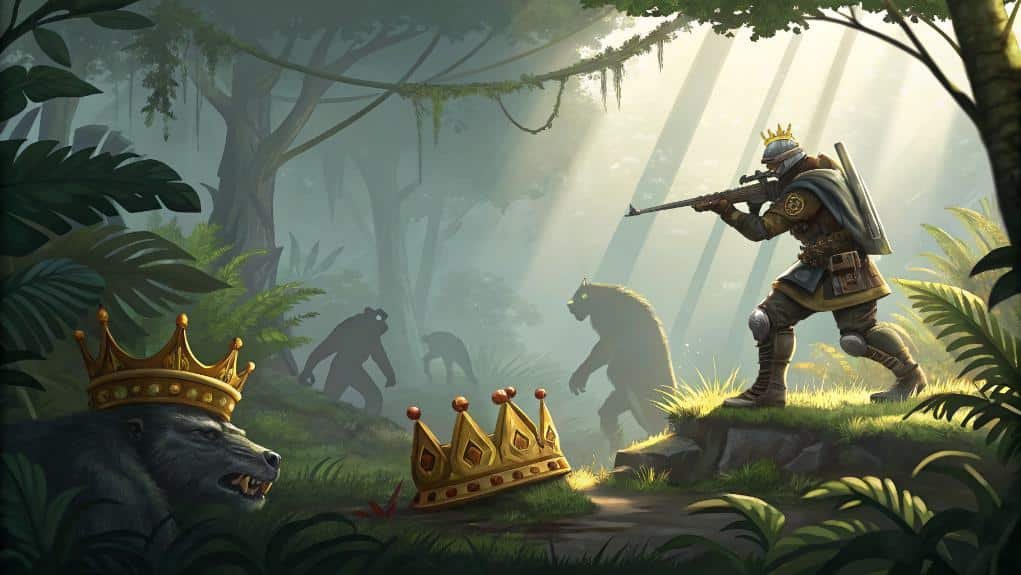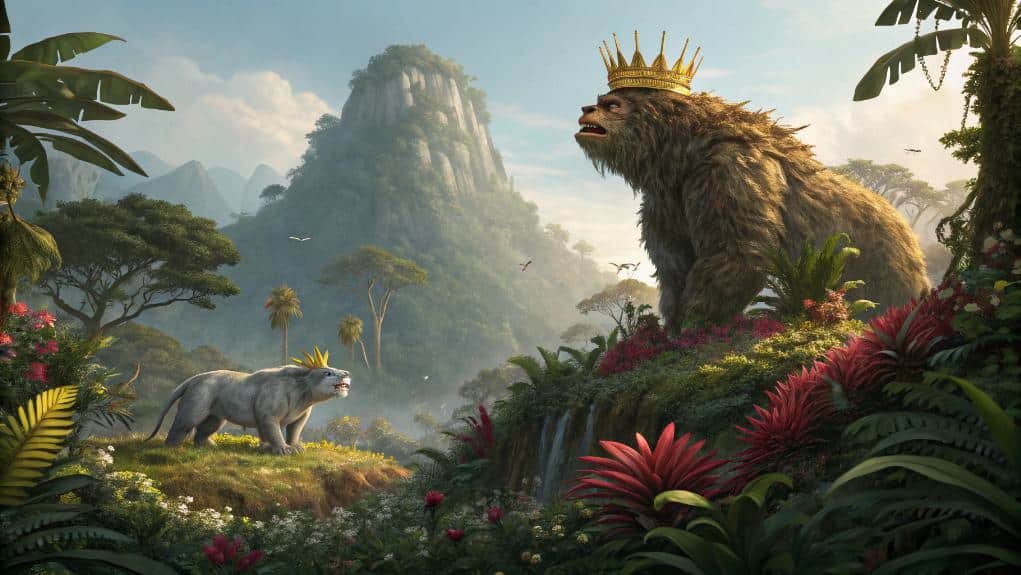In "Monster Hunter Wilds," crowns represent the size and rarity of monsters, with gold denoting the largest, silver the medium-sized, and miniature crowns for the smallest variants. Players should focus on hunting specific monsters known for gold and silver crowns, while observing environment and behaviors for successful strategies. Miniature crown hunting requires sharp eyes, especially for monsters like Great Jagras and Anjanath. For best results, players can explore effective farming spots and utilize timing strategies to net rare monsters. There's plenty more insight to uncover!
Key Takeaways
- Focus on hunting specific monster species known to yield Gold and Silver Crowns for better chances of obtaining these rare sizes.
- Utilize effective hunting strategies tailored to each monster's habitat to maximize your efficiency and rewards during hunts.
- Observe monster behaviors and environmental preferences to identify and locate miniature crown variants more easily.
- Target prime farming locations, such as swampy areas, to increase the likelihood of encountering smaller aquatic monsters.
- Pay attention to monster activity times, as some are more prevalent during specific periods, enhancing your farming opportunities.
Understanding Monster Crowns

Understanding Monster Crowns is essential for any player looking to excel in Monster Hunter Wilds. These crowns signify the rarity of monsters based on their sizes, which can vary greatly.
Players aim for three types of crowns: gold, silver, and miniature, each representing a different tier of monster size. Gold crowns denote the largest specimens, while silver crowns indicate medium-sized monsters. Miniature crowns, on the other hand, represent the smallest variants.
Collecting crowns not only enhances a player's hunting portfolio but also contributes to their overall mastery of the game. By understanding crown rarity and the implications of monster sizes, players can strategically target hunts, maximizing their rewards and achievements in Monster Hunter Wilds.
The Importance of Gold and Silver Crowns
In Monster Hunter Wilds, gold and silver crowns play an essential role in enhancing a hunter's experience.
These crowns not only signify the size of a monster but also reveal tangible benefits that can greatly impact hunting strategies.
Understanding how to effectively farm for these crowns can elevate a player's status and improve their overall gameplay.
Crown Benefits Explained
Crown hunting in Monster Hunter Wilds brings significant advantages for players seeking to enhance their gameplay experience. Obtaining Gold and Silver Crowns not only increases crown rarity but also adds a unique flair to a player's collection.
These crowns signify the hunter's achievements and dedication, showcasing their prowess in battling larger or smaller monsters. Additionally, the crown aesthetics contribute to a character's visual appeal, making them stand out in multiplayer sessions.
Players often take pride in flaunting their crowns, creating a sense of accomplishment. Beyond mere aesthetics, these crowns can impact gameplay, influencing monster behavior and drop rates, ultimately enriching the overall hunting experience.
Therefore, pursuing crowns is a rewarding endeavor for dedicated hunters.
Hunting Strategies Overview
While hunting in Monster Hunter Wilds, players quickly realize the significance of targeting monsters that can yield Gold and Silver Crowns. These crowns not only enhance a hunter's prestige but also offer unique rewards and benefits.
To maximize success, players should employ effective hunting tactics tailored to specific monster habitats. Understanding the behaviors and environmental preferences of target monsters is essential. For instance, some monsters thrive in dense forests, while others prefer open plains or volcanic regions.
Identifying Miniature Crown Monsters

Identifying miniature crown monsters can be a thrilling challenge for hunters enthusiastic to complete their collection. These creatures fall under specific size classifications, distinguishing them from their larger counterparts. Miniature crown identification requires keen observation and experience, as these monsters often appear similar to regular specimens.
Here's a quick reference table to aid in identification:
| Monster Type | Size Classification | Miniature Crown Identification |
|---|---|---|
| Great Jagras | Medium | Smaller than average size |
| Anjanath | Large | Noticeably reduced dimensions |
| Nergigante | Extra Large | Compact features and stature |
Hunters can enhance their crown farming experience by familiarizing themselves with these details, ensuring they don't miss a chance to capture a miniature crown monster.
Effective Farming Strategies
To maximize the chances of encountering miniature crown monsters, hunters should adopt targeted farming strategies that focus on specific habitats and times.
Identifying prime farming locations is essential; each monster species thrives in distinct environments. For instance, swampy areas often house smaller variants of aquatic monsters, while mountainous terrains are ideal for certain flying creatures.
Timing also plays a significant role; some monsters are more active during specific times of day. Hunters should plan their expeditions around these patterns, increasing the likelihood of finding miniature crowns.
Additionally, utilizing environmental traps and bait can lure these elusive monsters into view. By focusing on the right farming locations and understanding monster habitats, hunters can enhance their crown farming efficiency and success rate.
Recommended Gear and Loadouts

When aiming for miniature crowns, equipping the right gear and loadouts is essential for a successful hunt.
Players should focus on gear optimization and loadout synergy to maximize efficiency and effectiveness. Here are some key recommendations:
- Lightweight Armor: Prioritize sets that enhance speed without sacrificing defense.
- Status Weapons: Use weapons that inflict status effects like paralysis or sleep to control monsters.
- Capture Enhancements: Equip items that boost trap effectiveness, ensuring successful captures.
- Tracking Tools: Include items that enhance tracking abilities, making it easier to locate target monsters.
Tips for Tracking and Capturing Monsters
Understanding monster behavior is essential for successful tracking and capturing.
Hunters must pay attention to signs like footprints, scratch marks, and sounds to anticipate a monster's movements.
Once located, employing effective capture techniques will guarantee a higher success rate in securing those prized crowns.
Tracking Monster Behavior
Tracking monster behavior is crucial for any hunter aiming to capture elusive creatures in Monster Hunter Wilds. Understanding monster movement patterns can greatly enhance a hunter's success rate.
Utilizing effective tracking tools allows hunters to monitor these creatures closely. Here are some tips to improve tracking skills:
- Study footprints: Analyzing tracks reveals essential information about monster size and direction.
- Listen for sounds: Distinct roars or rustling can indicate nearby monsters.
- Observe environmental signs: Look for broken branches or disturbed foliage that indicate recent activity.
- Utilize the map: Familiarize yourself with common habitats to predict where monsters might appear.
Effective Capture Techniques
Capturing monsters in Monster Hunter Wilds requires more than just keen observation; it demands a strategic approach tailored to each creature's unique behaviors.
Hunters should equip themselves with the right capture equipment, such as traps and tranquilizer bombs, to effectively immobilize their targets. Utilizing bait techniques is vital; placing meat or other bait items can draw monsters into a favorable position for capturing.
Timing is essential—wait for the creature to show signs of exhaustion before initiating the capture. Additionally, understanding the monster's habitat and patterns can enhance success rates.

